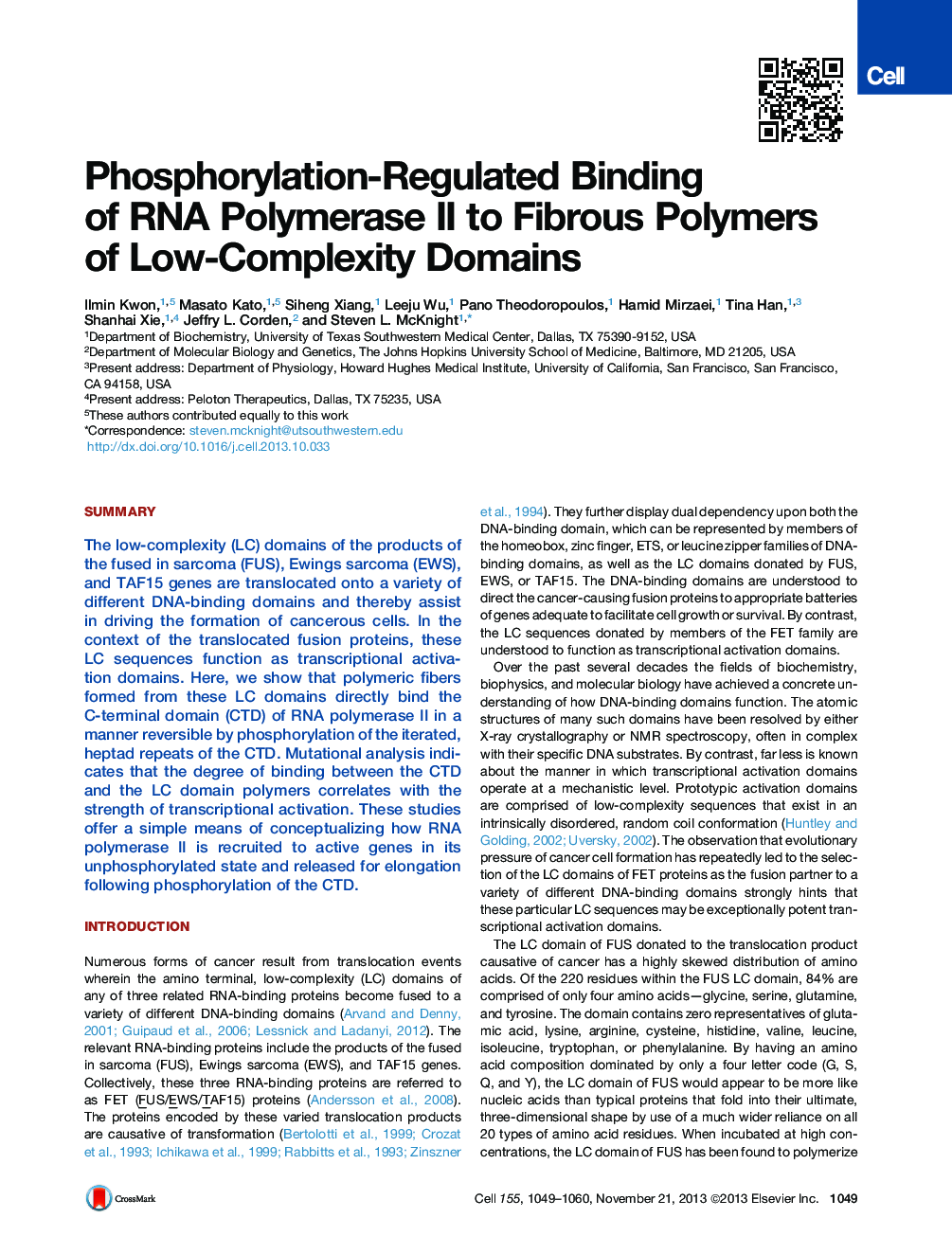| Article ID | Journal | Published Year | Pages | File Type |
|---|---|---|---|---|
| 2035644 | Cell | 2013 | 12 Pages |
•Low-complexity domains of FET proteins form reversible polymeric fibers•Polymeric fiber formation correlates with transcriptional activation capacity•The C-terminal domain (CTD) of RNA polymerase II binds to polymeric fibers•Prebound CTD is released from polymeric fibers by phosphorylation
SummaryThe low-complexity (LC) domains of the products of the fused in sarcoma (FUS), Ewings sarcoma (EWS), and TAF15 genes are translocated onto a variety of different DNA-binding domains and thereby assist in driving the formation of cancerous cells. In the context of the translocated fusion proteins, these LC sequences function as transcriptional activation domains. Here, we show that polymeric fibers formed from these LC domains directly bind the C-terminal domain (CTD) of RNA polymerase II in a manner reversible by phosphorylation of the iterated, heptad repeats of the CTD. Mutational analysis indicates that the degree of binding between the CTD and the LC domain polymers correlates with the strength of transcriptional activation. These studies offer a simple means of conceptualizing how RNA polymerase II is recruited to active genes in its unphosphorylated state and released for elongation following phosphorylation of the CTD.PaperFlick To view the video inline, enable JavaScript on your browser. However, you can download and view the video by clicking on the icon belowHelp with MP4 filesOptionsDownload video (98725 K)
Graphical AbstractFigure optionsDownload full-size imageDownload high-quality image (288 K)Download as PowerPoint slide
